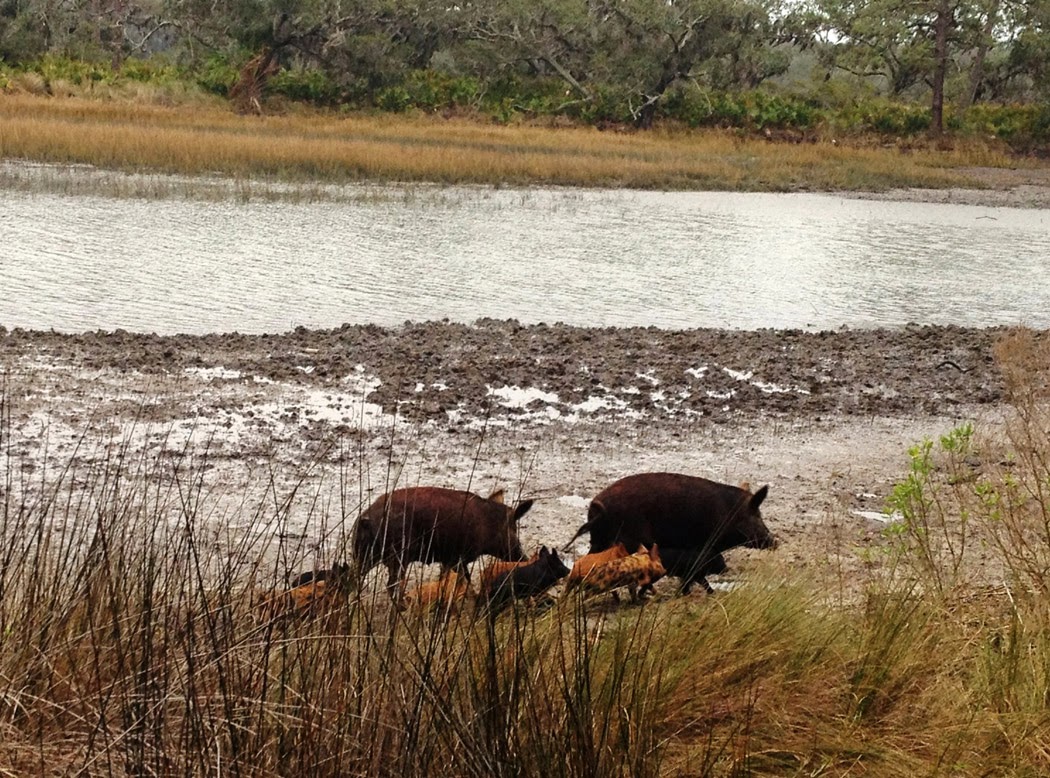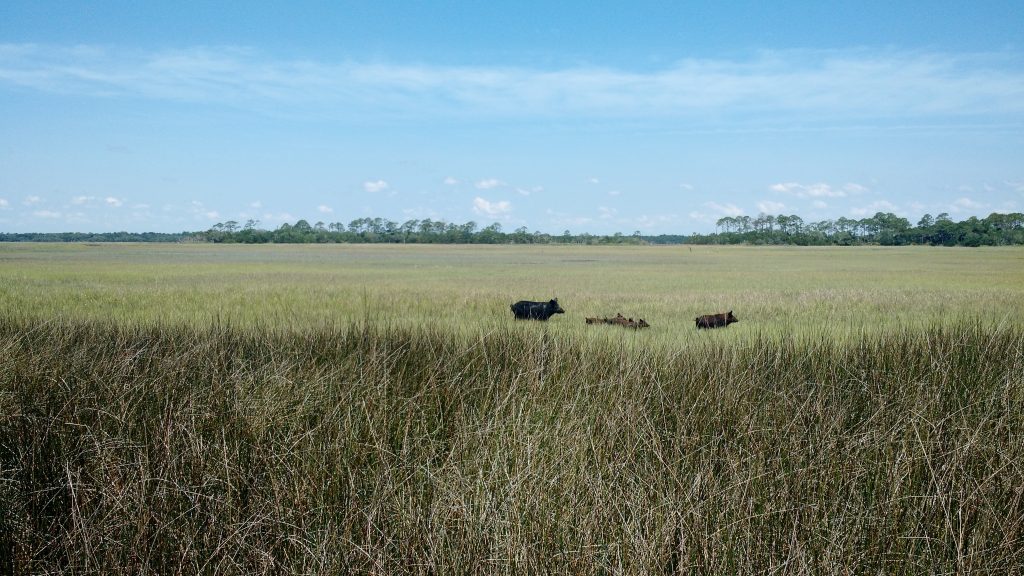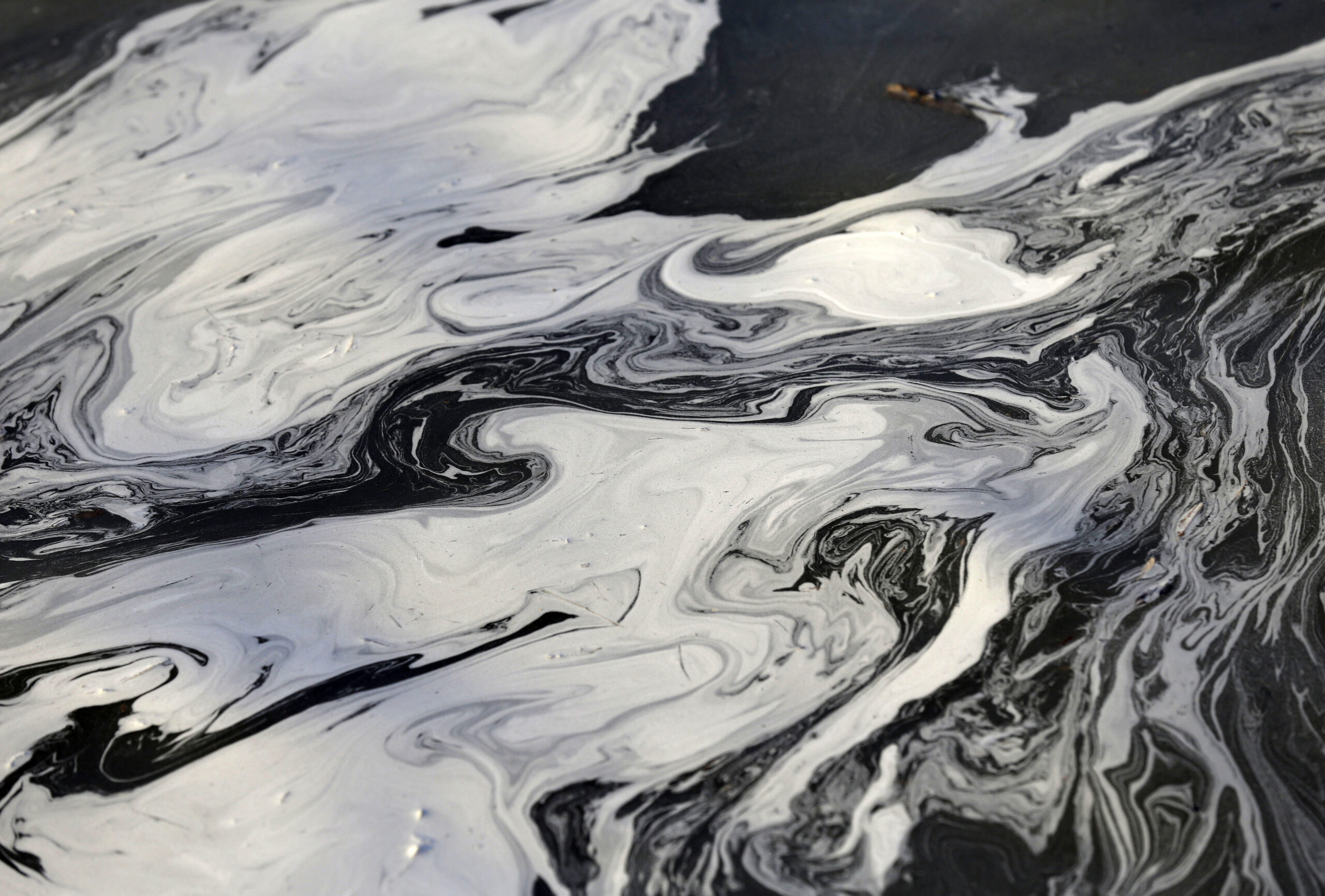Hog invasions leave marshes vulnerable to climate change

A family of feral hogs walks along the edge of a coastal Georgia marsh. The hogs are wreaking havoc and leaving marshes vulnerable to climate change.
Jennifer Hilburn
Those vast marshes, which stretch all along Georgia’s coast and barrier islands, aren’t just pretty landscapes for boating and birdwatching. They’re an essential line of defense.
The marshes, and especially their tenacious grasses, help prevent coastal erosion and slow down storms. And they’re incredibly resistant to drought.
That is, as long as they’ve got help from a particular kind of mollusk, called ribbed mussels.
“They’re sort of like an armor that protects marshes from-from the big climate effects,” said Marc Hensel with the Virginia Institute of Marine Science. He’s spent years doing research on Sapelo Island.
Clusters of ribbed mussels help marsh grasses retain moisture so they can withstand drought, and the marsh can bounce back afterward. Areas of marsh grass that survive drought thanks to the mussels serve as nuclei for regrowth throughout the marsh.
That is until the feral hogs trample in and devour the mussels.
“So hogs specifically target mussel-rich areas,” Hensel said. “When they do that, mussels are basically totally eradicated from the area.”
Hensel’s new research shows that marshes invaded by hogs are up to three times slower to recover from drought. And they’re far more vulnerable to sea level rise.
“Marshes can sort of handle one thing at a time,” Hensel said. “But when things stack up, like a drought comes through, and then when it’s time to recover from that drought, well, the hogs are here to specifically kneecap us right in the spot where we used to normally recover, that’s when we start to see potentially really big problems.”

The hogs’ impact is twofold. On their way to eat the mussels that keep marshes resilient, they trample areas where grass has started to grow, further stymying marsh recovery.
“They certainly do tear up the marshes,” said David Mixon, who leads Department of Natural Resources efforts to control the coastal hog population. “Their method of eating is they just roll everything, so it looks like a plow’s been across the marsh, and then that area will be open and muddy, and it’ll change the microtopography of it.”
The only solution is to get rid of the hogs. But they’ve been around since Spanish colonizers brought them centuries ago and have proven tough to eradicate.
Mixon said DNR has ramped up efforts to reduce the hog population in recent years. Federal wildlife officials have even taken to the sky, hunting hogs from helicopters.
“When you find groups of ’em out in the marsh, they’re in an area where they can safely eliminate nearly the whole group,” Mixon said.
Still, hog populations are booming throughout the southeast, wreaking havoc as they spread.







